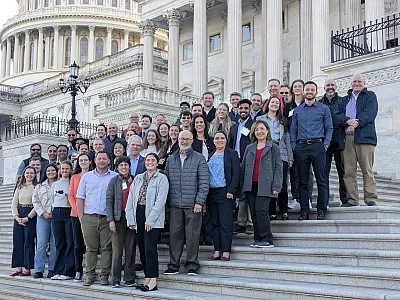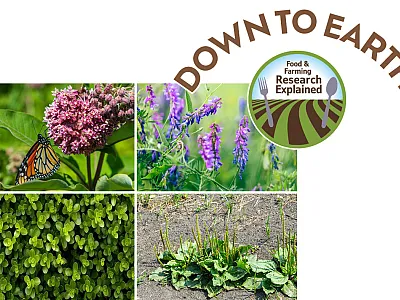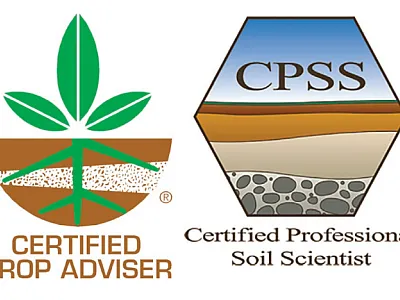Improving soybean yield in Wisconsin
Planting early and rethinking maturity group ranges
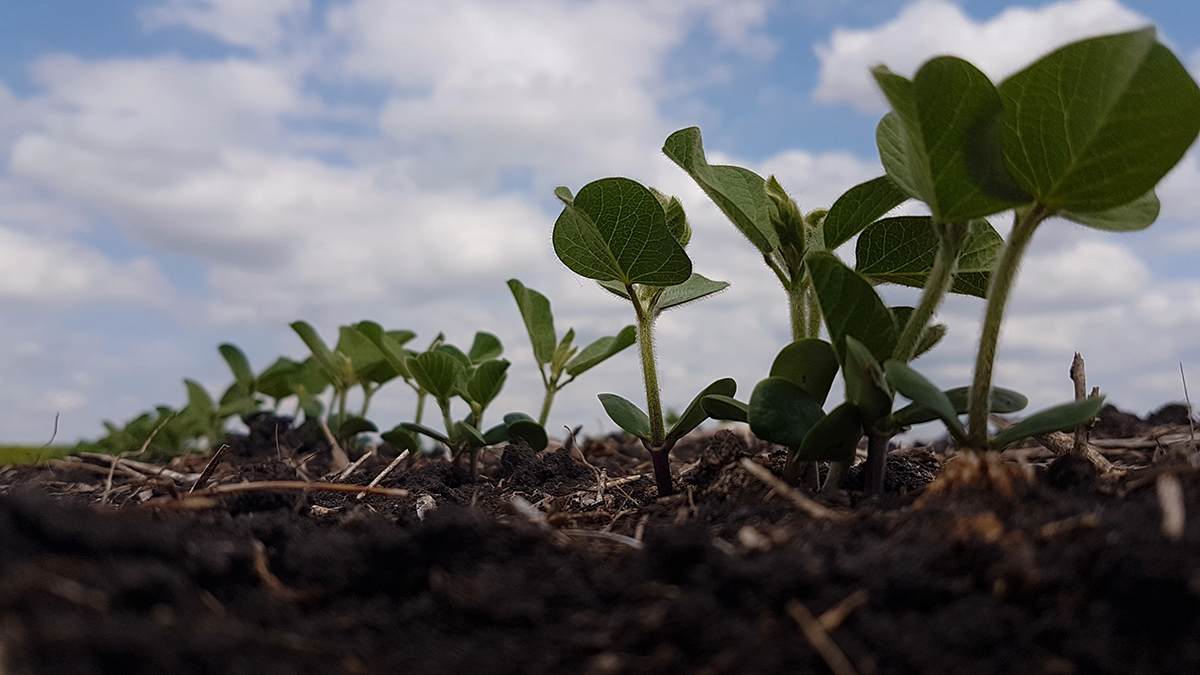

University of Wisconsin researchers have confirmed a strong link between early-planted soybeans and improved yields and discovered that viable maturity group ranges may be wider than previously thought. This research is especially relevant since the USDA Risk Management Agency has expanded its covered early-season planting window in the state, giving farmers more reason to reevaluate their cropping plans this spring. Earn 0.5 CEUs in Crop Management by reading the article and taking the quiz.
University of Wisconsin (UW) researchers have added to a growing body of results that prove earlier planting dates—especially before the 140th day of the year—contribute to maximizing yield in Wisconsin. Beyond good agronomic timing, the researchers evaluated soybean maturity groups from 0.3 to 2.9 for their impact on yield. The results, published in the journal Crop, Forage & Turfgrass Management, suggest a wider range available to Wisconsin growers than previously believed.
This research is especially relevant since the USDA Risk Management Agency has expanded its covered early-season planting window in the state, giving farmers more reason to reevaluate their cropping plans this spring. Combined with early planting, evidence of an expanded maturity group range may help farmers select a high-yielding seed variety slightly outside the traditional range for their region.
“[This research] confirms that later planting is detrimental and that farmers will want to plant as early as possible because, in both years, we started to see drastic decreases in soybean yield after the 140th day of the year,” says Andrew Malcomson, former graduate research assistant at UW and lead author of the report.
Field trial setup
The University of Wisconsin-Madison’s Arlington Agricultural Research Station, near Arlington, WI, served as the test plot for this study for both growing seasons, 2022 and 2023. Researchers describe the soil type as Plano silt loam, deep and well drained.
Soil tests were conducted at the start of each planting season, and the pH was 6.5 and 7.2 for the first and second years of the study, respectively. Likewise, phosphorus levels were 17 and 41 ppm, potassium levels were 154 and 116, and organic matter accounted for 2.8 and 3.3% of the soil, respectively.
Over two growing seasons, 2022 and 2023, researchers conducted fractional replication with five soybean planting dates (Table 1). An additional planting date was added to the 2023 growing season to further explore the impact of early planting.
“[This research] confirms that later planting is detrimental and that farmers will want to plant as early as possible because ... we started to see drastic decreases in soybean yield after the 140th day of the year."
Planting date (PD) | 2022 | 2023 |
1 | May 9 | April 12 |
2 | May 19 | April 28 |
3 | June 10 | May 16 |
4 | June 30 | June 8 |
5 | July 20 | June 29 |
6 | No additional PD | July 20 |
On each planting date, researchers planted 50 soybean varieties—40 were planted once, and 10 were planted twice, for a total of 60 plots. The varieties were randomly selected from the Wisconsin Soybean Evaluation Program entries in 2022 and 2023. This program is operated by the same research group from UW and published on this site annually.
Soybeans were planted in six 15-inch rows at a seeding rate of 140,000 seeds per acre in test plots. Herbicides were applied for post-emergent weed control at recommended rates and chosen based on their effectiveness against common weeds.
Researchers harvested the middle four rows after reaching the R8 growth stage and a moisture content of less than 15%. Harvest data was standardized to 13% moisture to determine yield.
Benefits of early planting
Wisconsin, like most states, is experiencing a warming trend that expands the traditional growing season. Early planting always carries risks, including unexpected frosts. Until recently, crop insurance timelines didn’t cover aggressive early planting. However, this research report contributes valuable evidence for early planting.
In the first growing season of the trial (2022), seeds planted before the 140th day of the year (May 20) performed the best, averaging 80 bu/ac or more. In the second year of the trial (2023), with earlier planting dates tested, the optimal planting date was before the 120th day of the year, or April 30.
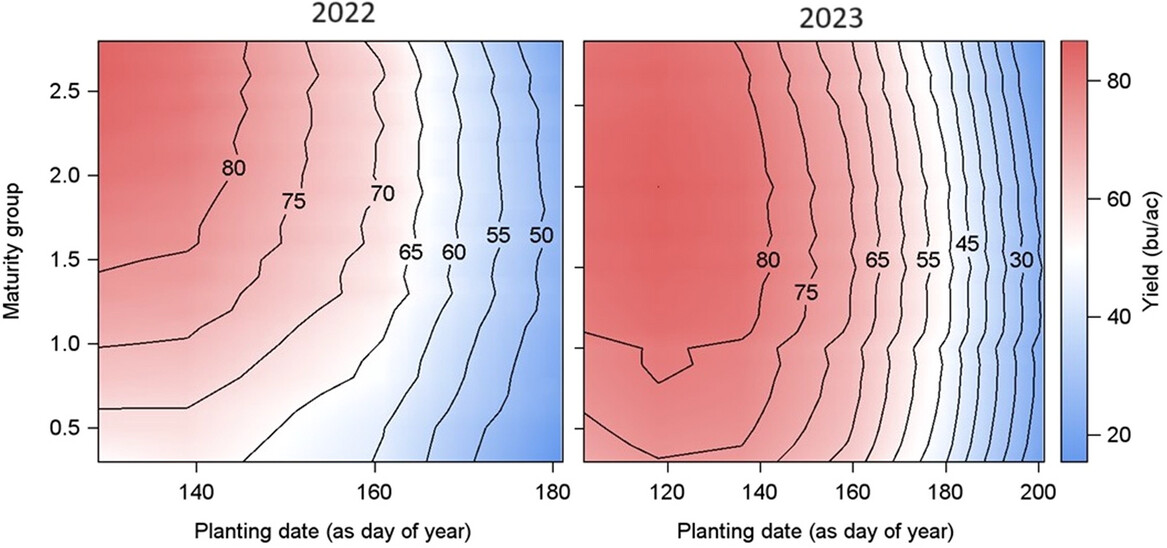
In response to a growing body of research—like this report—that connects earlier planting with better yield and farmer profitability, the USDA’s Risk Management Agency (RMA) shifted the earliest soybean planting dates in 2023. Wisconsin is one of several states impacted by the revised early planting dates.
In Wisconsin, the RMA date shifted from April 26 to April 15 in central and southern regions and to April 20 in the north-central part of the state. Malcomson says this is great news for farmers. “Now farmers can plant earlier and still have insurance on the plants, regardless of what maturity range or variety you're planting.”
With reduced risk for earlier planting, there’s little reason to delay soybean planting after corn. Farmers can find a two-for-one benefit by squeezing more yield out of their soybeans and potentially planting earlier for their fall or winter crop, helping it establish better before winter.
“The longer [soybeans] can develop vegetatively before they go to the reproduction stage, the more seeds they will produce at the end of the year,” Malcomson says. “So by planting earlier, soybeans get more vegetative growth and node production, which leads to more flowers, pods, seeds, and hopefully more yield.”
Earlier soybean planting creates a beneficial ripple effect for farmers who double-crop or plant winter cover crops. Earlier planting often means an earlier harvest date, which helps farmers who return to the field with winter wheat, rye, or another cover crop.
“I think [this research] helps farmers understand the flexibility soybeans can have in the rotation and how to incorporate other crops or cover crops into the system without losing yield,” says Shawn Conley, soybean and small grains specialist at the UW–Madison and co-author of the report.
“Farmers should pick the highest-yielding variety in the earliest maturity group possible. That gives them the flexibility in the backend to get a cover crop or a winter wheat crop established."
“Farmers should pick the highest-yielding variety in the earliest maturity group possible. That gives them the flexibility in the backend to get a cover crop or a winter wheat crop established,” he suggests.
Determine the best maturity group
In addition to planting date, researchers were interested in determining the interactions between planting date and maturity group. In 2022, the optimal maturity group range for maximum yield was 1.5 to 2.9. However, in 2023, a wider range was identified (1.1 to 2.9 maturity groups) that provided maximum yield potential. The data show that in early planted soybeans, a broader range of maturity groups performed similarly to traditional ranges for central Wisconsin.
Every 10 years, UW researchers update the state’s optimum soybean maturity group map, which overlays maturity group data on the state map. The most recent one is eight years old and still represents good agronomic sense for Wisconsin farmers. But it’s important for crop consultants and farmers to stay up to date as the maps and related recommendations change over time.

“Thirty years ago, the optimal maturity group for where we are in Wisconsin was 1.5, and today it’s a 2.5,” Conley says. “There are a lot of reasons behind that, but part of it is that we generally see a longer growing season.”
The evolution of this map over time is one reason the RMA took steps to update its early planting dates across much of the eastern and central United States. It’s also a good reminder that adjusting maturity groups isn’t new; change happens slowly but surely.
Researchers understand the nuance of maturity groups. Rather than adhering to a standardized scale, seed companies assign maturity groups to their seeds relative to their other offerings, making it challenging for farmers to compare companies and varieties.
Conley encourages crop consultants and farmers to review work from independent universities that conduct standardized trials with soybean seed varieties to better understand a variety's performance. UW Extension performs variety tests annually and publishes results on its website.
“We give folks the yield, we tell them the maturity group, and when we harvest them, they can use our data to go to the seed company and say, ‘I want that variety,’” Conley says.
Malcomson, who now works for a seed company in Illinois, knows most farmers ordered their 2025 seeds last summer. But he recommends discussing 2026 planting decisions with a more open mind about what maturity groups work in your region.
“If there is a high-yielding variety that’s performing well in trials but is a maturity group that is slightly earlier than what you would typically plant, maybe it's not such a bad idea to try out,” Malcomson says.
Dig deeper
Malcomson, A., Mourtzinis, S., Gaska, J., Roth, A., Silva, T. S., & Conley, S. (2024). Planting date and maturity groups effects on soybean yield in Wisconsin. Crop, Forage & Turfgrass Management, 10, e70015. https://doi.org/10.1002/cft2.70015
Self-study CEU quiz
Earn 0.5 CEUs in Crop Management by taking the quiz for the article at https://web.sciencesocieties.org/Learning-Center/Courses. For your convenience, the quiz is printed below. The CEU can be purchased individually, or you can access as part of your Online Classroom Subscription.
The USDA’s Risk Management Agency shifted the earliest soybean planting dates in Wisconsin in 2023 to
a. April 1 in the central and southern regions.
b. April 20 in the central and southern regions.
c. April 1 in the north-central part of the state.
d. April 20 in the north-central part of the state.
2. In this Wisconsin study, researchers found drastic decreases in soybean yield when planting after the ____ day of the year.a. 110th
b. 120th
c. 130th
d. 140th
3. What was the latest planting date the researchers looked at in this experiment?a. June 30.
b. July 5.
c. July 15.
d. None of the above.
4. In the second year of the trial (2023), with earlier planting dates tested, the optimal planting date was before April 30.a. True.
b. False.
5. This study found that the range of maturity groups that performed similarly to traditional ranges for central Wisconsina. was broader.
b. was narrower.
c. did not change.
d. changed but not enough for the Risk Management Agency to update its early planting dates.
Text © . The authors. CC BY-NC-ND 4.0. Except where otherwise noted, images are subject to copyright. Any reuse without express permission from the copyright owner is prohibited.




